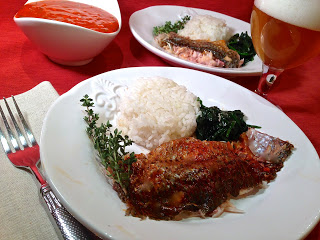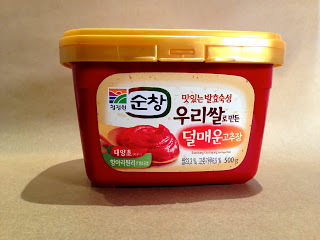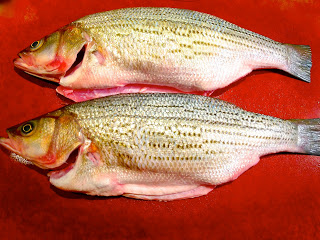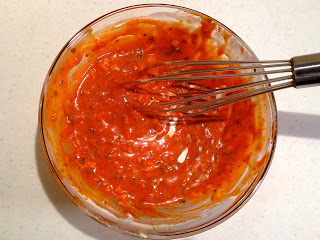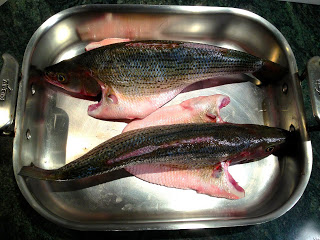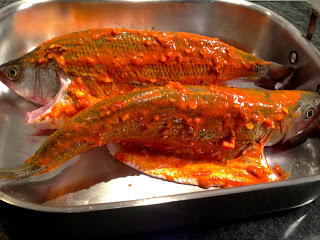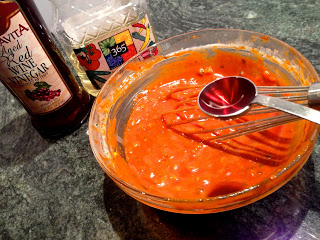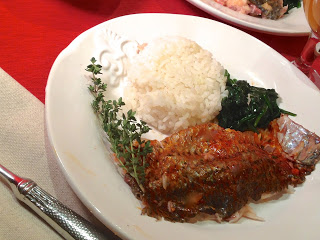I have a constant itch that must be scratched. It’s a dogged curiosity that won’t let me accept the status quo. I always need to be in the know: the hottest place to eat, the hippest chef on the scene, the latest food trend in the kitchen. That’s why, when I first heard about this “new” ingredient, I had to find it, own it, cook with it. Now. Lucky for me, Korean condiments are not out of my realm of obtainability, thanks to a local Asian chain known as H Mart. The friendly store manager who helped me find it on the shelf told me that, without this staple, Korean cooking isn’t–well–Korean. The thick, rich, fermented chili paste is news to me, but oh, what a discovery! Touted as the Sriracha of the moment, it blows most spicy condiments away with its slightly sweet, perfectly piquant flavor. It will be my new go-to–I’m already conjuring up many exciting ways to use it. Here it’s slathered on whole striped bass before roasting and used in the accompanying sauce. This fish never had it so good.
Gochujang Striped Bass
If you’ve never cooked with whole fish before, now’s the time to give it a try. It’s actually easier to prepare and the flesh is so much more sumptuous to eat. Any firm, white-fleshed fish works well here: striped bass, black sea bass, snapper, about 2 pounds each. Ask your fishmonger to gut, scale, and remove the fins and gills for you. Bring the fish to room temperature before preparing.
Preheat the oven to 375 degrees. In a medium bowl, whisk together Gochujang with freshly minced thyme leaves, minced garlic cloves and heavy cream. (If you don’t have Gochujang,
see substitution below.)
Pat the fish dry with a paper towel. Place them in a small roasting pan or large sauté pan, belly down, using their collar bones to prop them into an upright position.
Let the fish rest for a couple of minutes before filleting. This is when you get your nerve up–it’s a tricky thing to do. Use a sharp knife to score the skin and then a flexible metal spatula to lift the fillets off the central spine. If all else fails (as is often the case for me), a large spoon can help remove the flesh from the bones. Serve with rice and wilted spinach.

